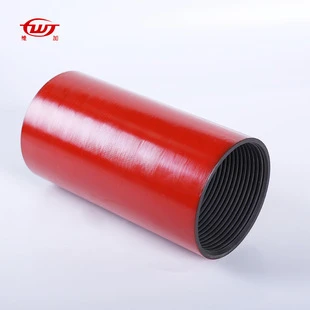- Afrikaans
- Albanian
- Amharic
- Arabic
- Armenian
- Azerbaijani
- Basque
- Belarusian
- Bengali
- Bosnian
- Bulgarian
- Catalan
- Cebuano
- Corsican
- Croatian
- Czech
- Danish
- Dutch
- English
- Esperanto
- Estonian
- Finnish
- French
- Frisian
- Galician
- Georgian
- German
- Greek
- Gujarati
- Haitian Creole
- hausa
- hawaiian
- Hebrew
- Hindi
- Miao
- Hungarian
- Icelandic
- igbo
- Indonesian
- irish
- Italian
- Japanese
- Javanese
- Kannada
- kazakh
- Khmer
- Rwandese
- Korean
- Kurdish
- Kyrgyz
- Lao
- Latin
- Latvian
- Lithuanian
- Luxembourgish
- Macedonian
- Malgashi
- Malay
- Malayalam
- Maltese
- Maori
- Marathi
- Mongolian
- Myanmar
- Nepali
- Norwegian
- Norwegian
- Occitan
- Pashto
- Persian
- Polish
- Portuguese
- Punjabi
- Romanian
- Russian
- Samoan
- Scottish Gaelic
- Serbian
- Sesotho
- Shona
- Sindhi
- Sinhala
- Slovak
- Slovenian
- Somali
- Spanish
- Sundanese
- Swahili
- Swedish
- Tagalog
- Tajik
- Tamil
- Tatar
- Telugu
- Thai
- Turkish
- Turkmen
- Ukrainian
- Urdu
- Uighur
- Uzbek
- Vietnamese
- Welsh
- Bantu
- Yiddish
- Yoruba
- Zulu
well casing coupler
Understanding Well Casing Couplers A Crucial Component in Oil and Gas Operations
In the world of oil and gas extraction, the integrity and functionality of well construction are paramount. Among the many components that ensure this integrity, well casing couplers play a vital role. These couplers are essential for connecting segments of casing pipe, which surround and support the wellbore, thereby preventing its collapse and protecting groundwater resources from contamination.
What is a Well Casing Coupler?
A well casing coupler is a specialized fitting that joins two pieces of casing pipe together. Casing pipes are tubular structures typically made of steel or thermoplastic, designed to sustain the pressures encountered in underground wells. The couplers, often referred to as casing joints, can vary in size, shape, and material depending on the specific requirements of the well being drilled. Their primary purpose is to create a robust connection that can withstand the harsh conditions found below the Earth's surface.
Importance of Well Casing Couplers
1. Structural Integrity The primary function of casing is to provide structural integrity to the wellbore, maintaining its shape throughout the drilling process and into production. Well casing couplers are critical to this function as they ensure a tight, reliable connection between casing segments.
2. Preventing Contamination Properly installed casing and couplers prevent the migration of fluids and gases between different geological formations. This containment is essential for protecting groundwater and ensuring the safe extraction of hydrocarbons.
3. Facilitating Drilling Operations Casing couplers aid in the efficient progression of drilling operations by allowing for quick and reliable connections between pipe segments. This efficiency can significantly reduce downtime and associated costs, which are critical factors in the highly competitive oil and gas industry.
4. Pressure Management Well casings need to withstand high pressures from both the hydrocarbon reservoir and the drilling fluids used in the process. Casing couplers enable the management of these pressures, ensuring that the well can safely contain the forces exerted during drilling and production.
Types of Well Casing Couplers
There are several types of couplers designed for various applications and conditions
well casing coupler

- Threaded Couplers These are the most common type, utilizing threaded ends that screw into the casing pipes. They provide a strong, leak-proof seal and are relatively easy to install.
- Fusion-Bonded Couplers Often used in thermoplastic casing systems, these couplers are bonded to the pipe using high temperatures. They create a seamless connection that can withstand significant strain.
- Welded Couplers In specific applications where high strength is demanded, welded couplers may be employed. Welding provides a durable and robust connection but requires skilled labor and careful quality control.
- Flanged Couplers Typically used for more extensive systems where ease of disassembly is crucial, flanged couplers allow for quick connection and disconnection between casing sections.
Installation Considerations
Proper installation of casing couplers is vital for the overall success of drilling operations. Factors to consider include
- Material Compatibility Choosing the right material for both the couplers and casing pipes is essential to prevent corrosion and ensure long-term reliability.
- Alignment and Torque Ensuring that the casing segments are correctly aligned during installation is critical. Additionally, proper torque must be applied to threaded connections to achieve an optimal seal without over-tightening and risking damage.
- Inspection and Testing After installation, it is essential to inspect and test the coupler connections. This includes pressure testing to ensure that there are no leaks and that the integrity of the well structure is maintained.
Conclusion
In summary, well casing couplers are an indispensable part of the oil and gas drilling process. Their role in connecting casing pipes ensures the structural integrity of the well, prevents contamination, and enhances drilling efficiency. Various types of couplers cater to different needs, and their proper installation is critical for the safety and success of drilling operations. As the oil and gas industry continues to evolve, innovations in casing coupler design and installation techniques will likely emerge, further enhancing the efficiency and safety of operations. Understanding and implementing best practices in the use of well casing couplers is essential for operators seeking to optimize their drilling projects and maintain environmental protection standards.
-
Tubing Pup Joints: Essential Components for Oil and Gas OperationsNewsJul.10,2025
-
Pup Joints: Essential Components for Reliable Drilling OperationsNewsJul.10,2025
-
Pipe Couplings: Connecting Your World EfficientlyNewsJul.10,2025
-
Mastering Oilfield Operations with Quality Tubing and CasingNewsJul.10,2025
-
High-Quality Casing Couplings for Every NeedNewsJul.10,2025
-
Boost Your Drilling Efficiency with Premium Crossover Tools & Seating NipplesNewsJul.10,2025







